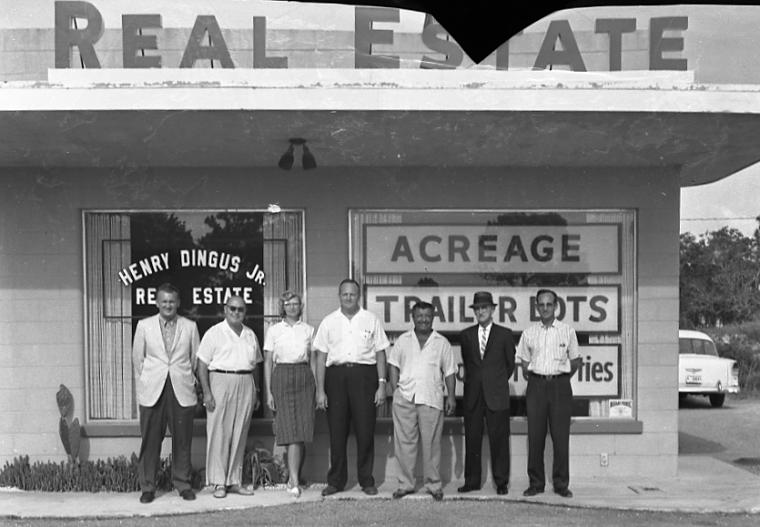

ERA IV: 1940-1955
(THE SLUMP)
US 19 was constructed in the 1940's.
It was a two lane road (one in each direction, as opposed to Dixie Hwy that was a one lane path).
US 19 did little at first to change Hudson at first. Yet, the town did change a lot, in only few bad years.
During the 1930's, the Great Depression affected Hudson very little. It was too simple a life here, as we have seen. The ramblings of the stock market had an amazingly miniscule effect. But just as it appeared that Hudson was on a path to continued small town prosperity, the tide went out. By the late 1940's Hudson hit its own depression. In the economic career of the town, the period from the mid 40's to the mid 60's was a lowpoint. The lumber and turpentine industries went belly up, even the Fivay Company closed its doors as they irresponsibly cut down too many trees for sustained business. It would take many years for these trees to grow back. The Fivay RR closed as well. Businesses downtown closed their doors, most forever, as well, and the town stagnated.

WWII Vets from Hudson listed on the 'Honor Role' prepared by the wartime 'Victory Club.'
Though there were few here, a great many proud men went overseas and fought for their country.
Hudson men no longer working in the industries turned back to their old friend the sea. A temporary solution was found in sponging on the Gulf, just like in Tarpon Springs. For a few years, over 30 sponging, shrimping and fishing boats operated out of the Port of Hudson. Packing houses and storage warehouses were built to handle the catch, and things looked good briefly, but this proved not to last. A disease killed off many sponges, and the fish supply dwindled, so Hudson again committed assisted economic suicide. (assisted by the natural sponge disease, overfishing by people). This was the situation the town was in when, in the 1950's, though it would take 40 years to fully catch on, someone had a great idea.

Next Section: Hudson Transforms--------->